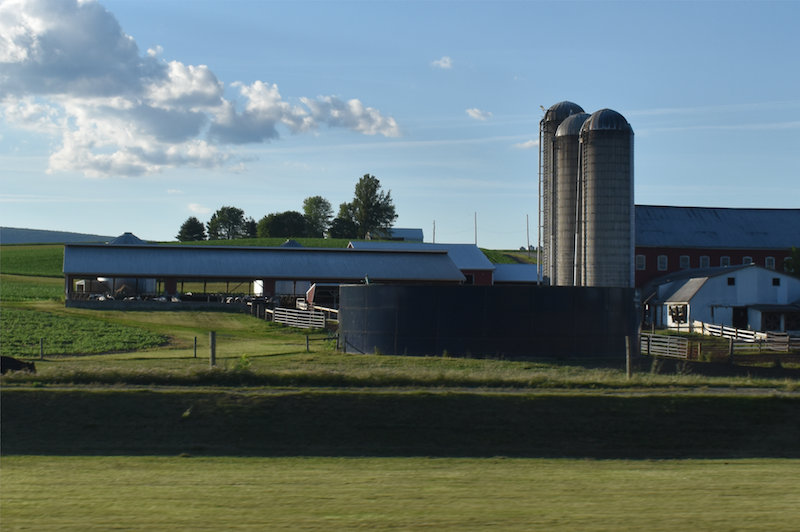
A farm in Ohio, where soybean and corn are the biggest crops, June 23, 2021 (Photo by Jules Struck).

A farm in Ohio, where soybean and corn are the biggest crops, June 23, 2021 (Photo by Jules Struck).
Farming sustainably is already hard work, and young potential farmers need to be creative to find a foothold in an aging industry.
The average age of U.S. farmers is 57, but the number of farmers under 35 grew 11% from 2012 to 2017, according to the latest census from the United States Department of Agriculture (USDA). Young farmers made up 9% of U.S. farm producers as of 2017.
Sustainable farming practices are on the rise as well. Farmers are turning away from tilling practices that chop up and erode nutritious topsoil. The amount of heavily tilled land decreased nearly a quarter from 2012 to 2017 while no-till acreage increased 8%. Cover crops, which help farmers reduce erosion and increase biodiversity on their soil, doubled in acreage in the same period.
Land use for certified organic products is also up by 9% from 2016 to 2019, and people are eating it up — sales rose 31%.
Despite the numbers, sustainability is still a huge term. Melissa Kenney, director of Research and Knowledge Initiatives at the University of Minnesota’s Institute on the Environment, tackles it in two parts: “Sustainability is not just an environmental concept. It is a concept that involves both the environment and society interwoven together,” she said.
Environmentally, sustainability means minimizing or eliminating pollution and leaving the planet in better condition for future generations. Sustainability also means providing people with basic necessary resources, Kenney said.
“You can’t have solutions that are good for the environment if they don’t also benefit people right now.”
Farmers are trying new things like cover cropping, no-till, and organic farming to preserve and regenerate the land. None of these methods is a catch-all, and their effectiveness can vary depending on any one farm’s geography, said Paul West, co-director and lead scientist of the Global Landscapes Initiative at the University of Minnesota’s Institute on the Environment.
“But certainly, having a bundle or a suite of these approaches all at once certainly can lead to healthier soils and fields,” he said.
To get to the point of experimentation, though, young farmers need resources. The obstacles they face are varied, but they need at least three things to get their foot in the door: land, income, and community support.
—
About this series: The Planet Forward-FAO Summer Storytelling Fellows work was sponsored by the North America office of the Food and Agriculture Organization of the United Nations (FAO), and the Fellows were mentored by Lisa Palmer, GW’s National Geographic Professor of Science Communication and author of “Hot, Hungry Planet.”